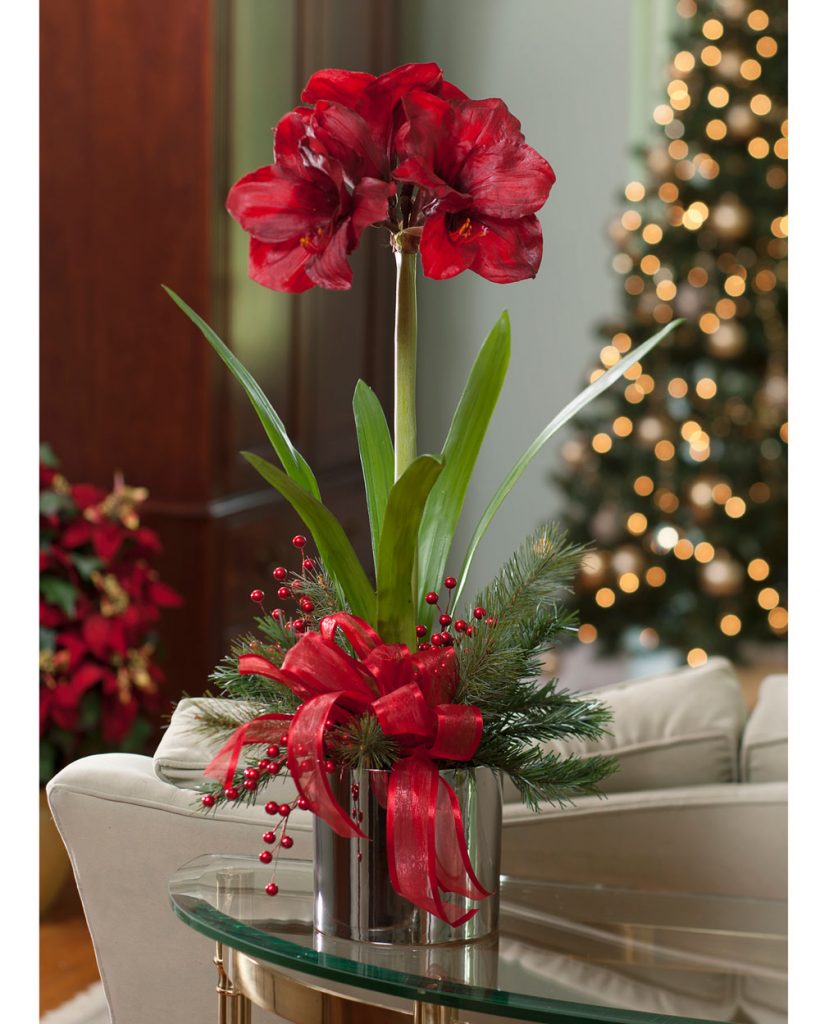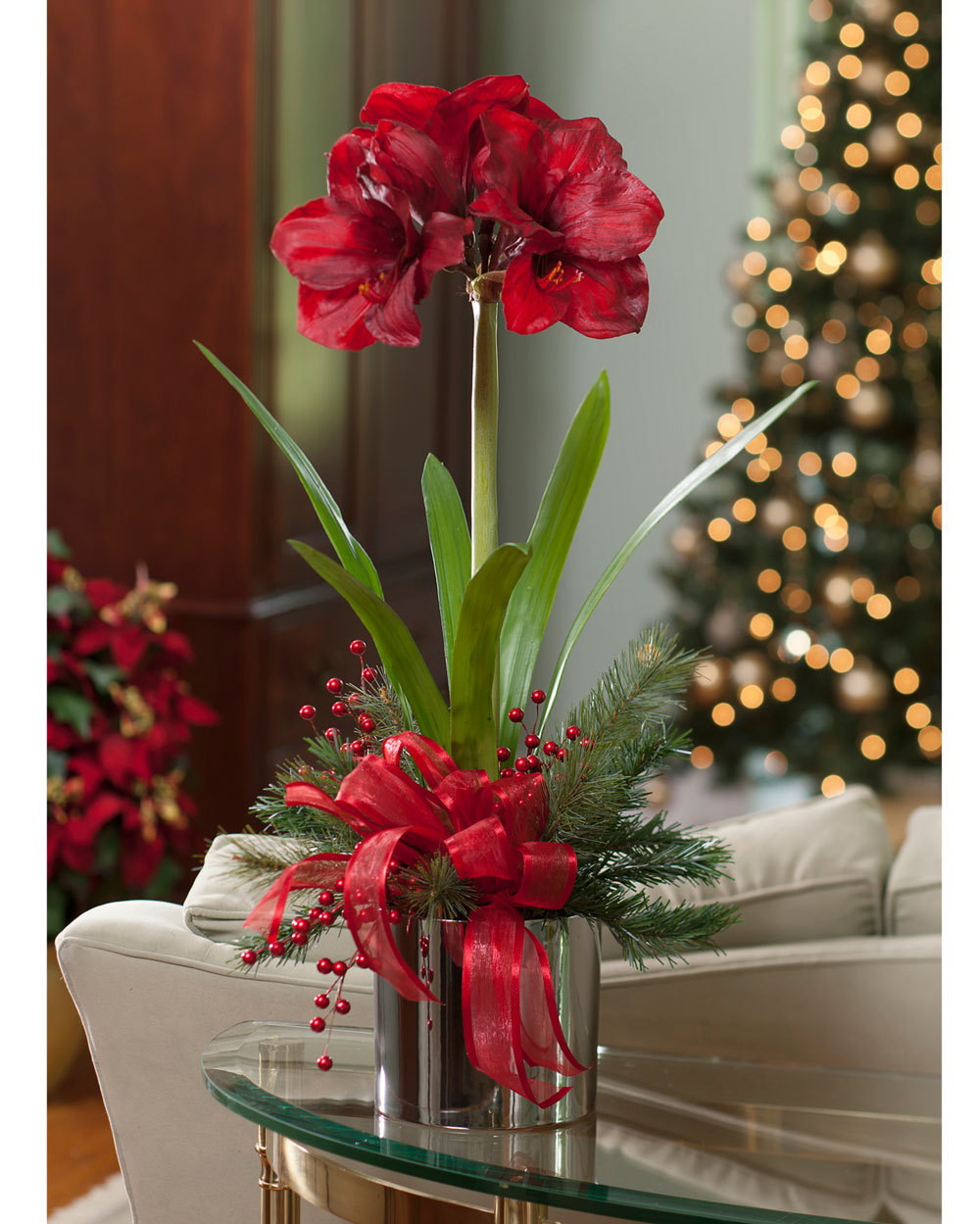Purchase large bulbs for lots of flowers.
Purchase the biggest amaryllis bulbs you can find. Jumbo, 34/36 cm bulbs will produce 3 stems
with 4 to 5 flowers per stem. Smaller bulbs will give you fewer stems and fewer blossoms.
Keep in mind that some amaryllis varieties naturally produce smaller bulbs than others. Sometimes a 28/30 cm bulb is the largest size available.

Choose several different varieties to extend the show.
There’s no way to know exactly when an amaryllis will flower, but some varieties tend to bloom sooner than others. If you want to have flowers all winter long, purchase a number of different varieties and don’t plant them all at the same time. Plant some bulbs in late fall and plant the rest in early winter.
After planting, be patient. It usually takes a month or two for the bulbs to wake up and begin growing.
Select the right pot and use good soil.
Amaryllis have long stems and big flowers. A heavy pot with a wide base will help the plant stay upright. Choose a pot that is about 2” wider than the bulb. If you are planting several bulbs in one container they can be planted about an inch apart.
Use a high-quality, sterile growing mix (to avoid fungus gnats). Moisten the soil, fill the pot a little more than half full and set the bulb on top. Add more soil, leaving the top 1/3 of the bulb exposed.
Water sparingly.
After you plant your bulbs, water well to help settle them into their pots. Then keep the soil barely moist, applying no more than ¼ cup of water per week. For best results, grow your amaryllis in a relatively cool room (60-65°F) with bright, indirect light.
The first thing to emerge from the bulb is usually a bud. Leaves and additional stems will follow. Rotating the pot every few days will help keep the stems straight.
Make the most of the flowers.
Depending on the size of the bulb, you can expect 1 to 3 stems, each with 3 to 5 flowers. All of the stems may come out at once, or they may emerge over a period of 2 to 3 weeks.
As with all fresh flowers, cool temperatures will extend their life. Amaryllis also make excellent cut flowers. Cut the stems right before the buds are ready to open, and display them in a vase with greens or other seasonal blooms.
Use scissors to clip off faded blossoms. Once the stem has finished blooming, use a knife to to make a clean cut about 1″ above the bulb.
Keep or toss the bulbs.
An amaryllis bulb costs no more than a supermarket bouquet. Yet many people find it hard to part with the bulb once the flowering season is over. If you wish, you can save the bulb and try getting it to bloom again next year. To learn more, read How to Get an Amarylllis Bulb to Rebloom.






 flower bulbs, amaryllis use their leaves to produce energy for next year’s flowers. Give the plant plenty of bright light to help it build up its reserves. Grow your amaryllis indoors during winter and spring. After danger of frost, you can move it outside for the summer.
flower bulbs, amaryllis use their leaves to produce energy for next year’s flowers. Give the plant plenty of bright light to help it build up its reserves. Grow your amaryllis indoors during winter and spring. After danger of frost, you can move it outside for the summer.